AARCHITECTURE 44
MISSION ACTION FACE
COMMUNICATION
JECT VAL
FERENCE RUPTION VENE
In this issue, we recognise the presence of the gap – an absence that then becomes. We put forth this state of INTER- and attempt to grasp its various conditions by gathering perspectives on the in-between: in language, in the archives and within the AA community.
1 NAME
MEDIATE LOCK
DISCIPLINARY VIEW SECTION ACT
NET LUDE CEPT STITION
Term 2, 2022–23
www.aaschool.ac.uk
Student Editorial Team:
Magdalena Picazzo Sánchez
Raluca Scheuşan
Mina Gürsel Tabanlıoğlu
Editorial Board:
Alex Lorente, Membership
Ryan Dillon, AA Communications Studio
Manijeh Verghese, Public Engagement
Design and Editorial Support: AA Communications Studio
Printed by Blackmore, England
Published by the Architectural Association
36 Bedford Square London WC1B 3ES
Architectural Association (Inc)
Registered Charity No 311083
Company limited by guarantee
Registered in England No 171402
Registered office as above
© 2023 All rights reserved
AArchitecture 44
AArchitecture is a magazine edited by students of the Architectural Association, published twice a year.
“WE ARE (LIVING) IN THE ARCHIVAL AGE”
FAILED MODELS: OPEN CALL
AS HARDLYFOUND INTHEARTOF TROPICALARCHITECTURE: VIRTUAL ROUNDTABLE
AA X ACCELERATE
MVRDV: FIVE PERSPECTIVES ON THE ARCHIVE AND EXHIBITION-MAKING
EXIST(S) IN THE CLOUD
INTER-SPACES: BETWEEN WORDS AND IMAGES
ABYA-YALA: RETROTOPIA A M E R I C A
FILL IN THE GAAP: SPACE
UN-DEFINE SPACE!
EXQUISITE CORPSE: PORTAABLE BAR
MAKING: THE (DIGITAL) CRAFT
1 CONTENTS
IN TRANSLATION VOID ECHOES FILL IN THE GAAP: TIME AA NEWS? CALL FOR SUBMISSIONS BIOGRAPHIES 2 4 8 11 12 17 20 25 30 32 33 36 40 44 48 50 51 52
LOST
"WE ARE (LIVING) IN THE ARCHIVAL AGE"
A conversation between Edward Bottoms and the editors
The Archive is generating the future. It is a way to establish our presence, our present and our identity¹. We are living a time of archival impulse, mal or fever² symptomatic of our need to document, augment and transmit our own presence.
in
1Gabriella Giannachi, ‘A Brief History of the Archive’,
ArchiveEverything:MappingtheEveryday
(Cambridge, MA: The MIT Press, 2016), p 2.
2Jacques Derrida, Eric Prenowitz, ‘Archive Fever: A Freudian Impression’, in Diacritics,vol
25, no 2 (1995), p 9, https://doi.org/10.2307/465144.
There is a long Western tradition of knowledge and power being represented by trees – from early Christian representations of Christ’s bloodline, and 18th-century aristocratic family trees, to Banister Fletcher’s ‘tree’ of architectural history and the hierarchical structure of archival catalogues.
How can we move away from such rigid hierarchical structures?
3 WE ARE (LIVING) IN THE ARCHIVAL AGE
This isn’t a failed model in itself, but rather a representation of the failed pieces of what might otherwise be a successful model. All the bits that were cut wrong, and the bits that didn’t work as intended and were removed before a tutor even got to see the model.
Erlend Birkeland, Diploma 5, 2022–23.

4 OPEN CALL


5 FAILED MODELS
AA Digital Prototyping Lab, Creativity Without Support, 3D printing a PLA model with the wrong settings.
AA Digital Prototyping Lab, Milling Mayhem, CNC milling of a medium-density block.
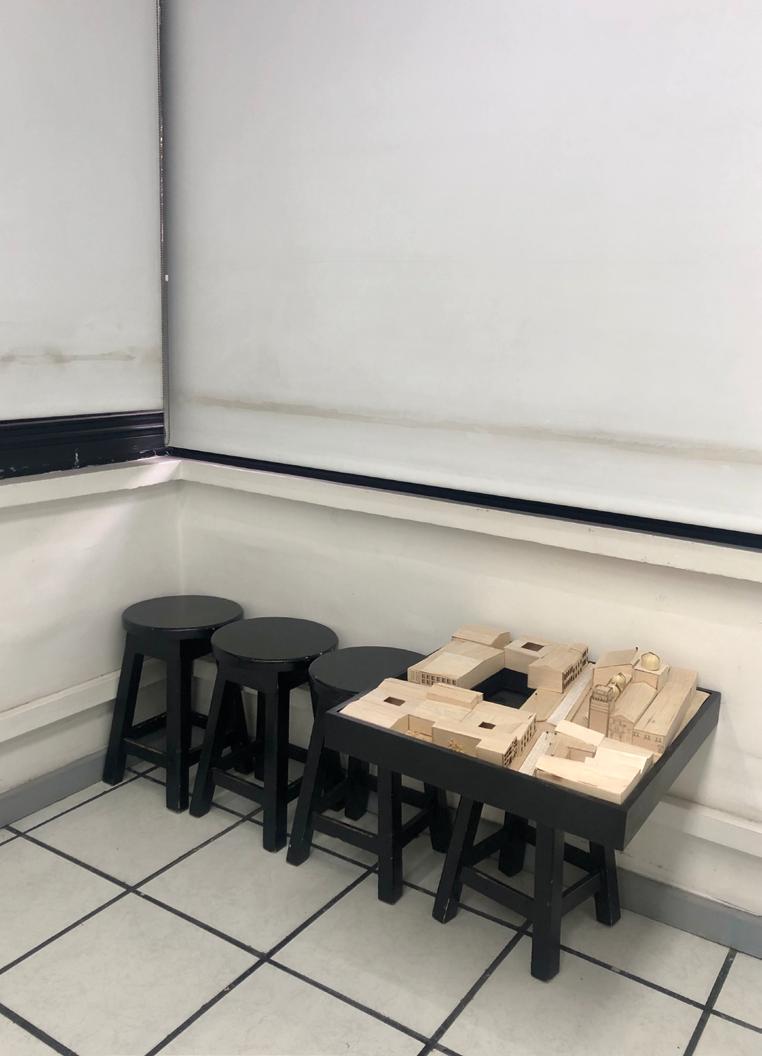

6
OPEN CALL
Christian Parreño (MA Histories and Theories, 2006), Forgotten Models, Colegio de Arquitectura y Diseño Interior (School of Architecture and Interior Design), Universidad San Francisco de Quito, Ecuador.
Tom Chan (Diploma 6, 2022–23), An Intuitive Archive of the National Gallery, London

The project involves creating an intuitive archive of 600 paintings from the National Gallery in London: a clustered field of images forms a fragmented picture of a body of knowledge. Thumbnails of the paintings were collected and rearranged to represent their position within the museum. This methodology went against traditional archival practices which follow a hierarchical structure. A second layer was then superimposed on the manual plate using digital clustering technologies and machine learning.
The traditional archival relationships between the paintings are disrupted by the action of clustering, collecting and collapsing their typical representation and documentation.
7
FAILED MODELS
AS HARDLY FOUND IN THE ART OF TROPICAL ARCHITECTURE Virtual
Roundtable
The As Hardly Found in the Art of Tropical Architecture exhibition was on view in the AA Gallery and the Front Members’ Room of 36 Bedford Square from Friday 20 January until Saturday 25 March 2023. Curated by Albert Brenchat-Aguilar, the exhibition was a critical examination of the existing archive of the Department of Tropical Architecture (DTS), established at the AA in 1953. As Hardly Found also invited its audience to consider the concept of a potential archive, and to acknowledge the overlooked and ‘peripherised’ figures within the DTS: a division of the school which aimed to export methodologies of architectural design and development planning to countries in the Global South.
We asked some of the people involved in the exhibition to answer questions that relate to breaks of continuity in the archive and to acts of translation. Their replies illuminate the nature of the interstices in which the
exhibition was positioned. By applying a range of critical strategies to the content of the DTS archive as it appeared in the exhibition, the respondents not only propose critical reconsiderations but also question the role of the archive as a logical holder of documents in which we represent our work, ourselves and others.
Exhibition curator Albert Brenchat-Aguilar, contributor Ato Jackson, AA Senior Public Programme Curator Harriet Jennings and Debbie Meniru, Assistant Curator of In the Black Fantastic at the Hayward Gallery, joined a virtual ‘roundtable discussion’ with us, in which we shared a document with them containing our questions and they consecutively added their responses. Below, the four discuss the tensions between what we archive and what we don’t, how we might (or might not) intervene within the archive critically, and the possibilities for the future of the As Hardly Found exhibition.
8 AS HARDLY FOUND
1. Is investigating the idea of ‘the gap’ about retrieving information or about expanding the narrative?
It’s about retrieving what is not there, or what is missing in the equation, and using that as potential material to expand the conversation within an ongoing narrative.
Yes, I agree that both processes are connected and complementary. Retrieving is a complex action that requires a total awareness of one’s own position in relation to others and their contexts, of one’s own heritage in relation to others’ heritages and of one’s own privilege to shape the future in relation to others’ privilege. The historical approach to the archive is, for me, about inhabiting the gap instead of filling it – coexisting with the struggles and the hidden joyful lives that the silences represent and approximating things carefully whilst acknowledging that we will never get it entirely right. This process of self-questioning never stops, but must be kept internal while we expand the narrative towards other histories and other collaborators.
This is, after all, the work of ‘Potential History’ as I understand it from Ariella Aïsha Azoulay:
• ‘Potential history does not mend worlds after violence but rewinds to the moment before the violence occurred and sets off from there.’
• ‘Potential history is a form of being with others, both living and dead, across time, against the separation of the past from the present, colonised peoples from their worlds and possessions, and history from politics.’
• ‘Potential history is the transformation of violence into shared care for our common world.’1
I like what Albert said about ‘inhabiting the gap instead of filling it’. I am interested in how we make the gaps visible and acknowledge their presence rather than how we fill them. To me, filling the gaps or retrieving ‘lost’ information suggests that we are working towards a complete narrative. I prefer the idea that a complete narrative is not possible or desirable. Therefore, ‘expanding the narrative’ is a way to understand that widely accepted histories and narratives are actually fictions and myths.
2. In the exhibition, you applied critical fabulation2 as a curatorial strategy. How do you feel about archiving examples of critical fabulation or of fabulography3? Do you think these should be placed in the gaps within an archive, or as separate pieces of work that follow their own timeline?
I think those works are more like responses to what history failed to do. It’s like adding another branch to a tree; one that takes its own path to the east, west, south or north. For me these fabulations take on their own life, creating friction with what is already there.
Ato raises a vital point about the capacity of critical fabulations to disrupt the archive. The archive has a significant influence on the writing of histories in academia and elsewhere; you always have to start with the evidence. What I find powerful about critical fabulations, such as Ato’s and Mariana’s work within the exhibition, is that they become points of departure in their own right; we don’t have to speak about the archive any more because they have created a new beginning.
1Ariella Aïsha Azoulay, Potential History: Unlearning Imperialism (London and New York, NY: Verso, 2019), pp 10, 43, 57. 2Critical fabulations aim ‘to displace the received or authorised account ... to imagine what might have happened or might have been said or might have been done.’ Saidiya Hartman, ‘Venus in Two Acts’, in Small Axe, vol 12, no 2, 2008, p 11. 3Priya Basil defines fabulography as ‘a practice of projecting freely, associatively into the gaps of the past to retrieve in any form – song, dance, film, text, drawing, recipe – something of what has been lost.’ Priya Basil, ‘Writing to Life’, in Dan Hicks, ‘Necrography: Death-Writing in the Colonial Museum’, in British Art Studies, no 19, 2021.
9 VIRTUAL ROUNDTABLE
3. How might the exhibition itself be archived?
I would prefer for it to be distributed to other spaces, to make its content accessible to as many people as possible.
Ifeanyi Awachie, a poet, scholar and film director, has argued through her work on Black and African feminist festivals that there are ways of archiving that disrupt the notion of the archive itself. She advocates for non-hierarchical forms of archiving such as ‘oral communication, memory and social media [which] can effectively serve as alternative means of knowledge transmission and preservation’4. Ato, Manijeh Verghese, Harriet Jennings and others involved in this project manage to do some of this through their active social media accounts and their roles as powerful social activators. They create spaces of interest that exist for the time being – archives that are accessible worldwide to people who will later expand that knowledge. Here, I quote karî’kachä seid’ou from his proposal of knowledge as the ultimate gift in the arts, wherein both parties have it and both parties benefit from it: ‘we must look at what kind of form the gift takes and what social forms it can enable’5
I like Ato and Albert’s intention for the exhibition to travel. The distribution of the exhibition to different places and audiences will open the archive up once again as a site of possibility – its representation will allow reinterpretation, and hopefully inspire new threads of investigation and imagining. The enquiries that follow will themselves be another form of archiving the exhibition, sometimes tangible and sometimes intangible. Speaking as part of the Imagining Otherwise event series at the AA recently, Huda Tayob paraphrased Michel-Rolph Trouillot to state that we are both ‘the actors and narrators of history’. How the exhibition goes on to be distributed and archived is another chapter in that narration.
4 Ifeanyi Awachie, ‘Archiving the African Feminist Festival Through Oral Communication and Social Media’, in Feminist Review, vol 125, no 1, 2020, pp 88–93.
5 Edwin Bodjawah and others, ‘Transforming Art from Commodity to Gift: karî’kachä seid’ou’s Silent Revolution in the Kumasi College of Art’, in African Arts, vol 54, no 2, 2021, pp 22–35.
10
AS HARDLY FOUND
AA x ACCELERATE
On Saturday 18 February 2023, in collaboration with the Open City Accelerate programme, the AA held a workshop for year 10 and 11 students from under-represented backgrounds who are interested in exploring a career in architecture or engineering.

The workshop was inspired by the As Hardly Found in the Art of Tropical Architecture exhibition in the AA Gallery, and by the practice of ‘critical fabulation’, initiated by Saidiya Hartman, which uses imagination and speculation to address omissions in an archive.
Participants in the workshop were asked to respond creatively to the task of filling gaps within architectural collections such as libraries and archives; they did so by bringing together their own personal narratives and family histories through drawing and design.

11 AA X ACCELERATE
FIVE PERSPECTIVES ON ARCHIVES AND EXHIBITION-MAKING
Miruna Dunu
The archive of an architectural practice such as MVRDV reflects the design principles of its creator in more ways than one; its management and display can reveal aspects of a practice’s identity and process that are not immediately visible within the content of the archive itself. These insights are particularly compelling in the case of a ‘living’ archive: one which perpetually expands as a practice develops. Archiving architectural work in this context poses a distinct set of challenges, which in turn translate into design questions to be addressed when the archive is exhibited.
The work of MVRDV has been the subject of several exhibitions; it has also been subjected to a range of different archival approaches. In 2016, the first 400 projects by the practice were donated to Het Nieuwe Instituut (the Dutch Museum for Architecture,
Design and Digital Culture). By becoming part of a national collection, this work became a publicly accessible testing-ground for scientific research and emerging archival practices; it also became subject to more stringent handling restrictions, in contrast to the spontaneity and ease with which it had previously been stored, manipulated and displayed within the office. Beyond Het Nieuwe Instituut, MVRDV’s ever-evolving body of work remains the subject of an ongoing archival process by the practice itself.
This piece identifies five different perspectives on the function of the MVRDV archive and considers how these have been translated within exhibition-making. While these perspectives overlap and intersect within every MVRDV exhibition, here they will be analysed with the support of individual case studies.
12 MVRDV:
MIRUNA DUNU
Memory allows a practice to frame its understanding of current projects by drawing upon past work, shaping its ontological consistency, direction and, ultimately, its identity. Yet memory is also fickle, so we must ask: how do we avoid sanitised, post-rationalised narratives around the archive?
In 2020, MVRDV marked the opening of its Berlin office with the MVRDV Haus Berlin exhibition, which displayed all of its projects that are located in Germany. The exhibition presented a streamlined chronology, bringing data collection strategies together with insight into the MVRDV design process. Yet the impact of memory, though not directly visible in the exhibits, was clearly evident throughout: explorations conducted within other MVRDV projects had informed the work on display. That which remains unsaid and unshown speaks just as loudly.

ARCHIVE AS A TOOL FOR REFLECTION


If memory allows a practice to establish its identity, then reflection helps to shape its future. Reflection is an integral part of the design process, yet in exhibition-making it raises a different question: how does one exhibit the archive as a tool for reflection rather than simply as a retrospective overview. Furthermore, to what extent can a practice reflect on its own work in an unbiased way?
The exhibition MVRDVHNI: The Living Archive of a Studio, held at Het Niewe Instituut in 2021, presented a dialogue between two voices: that of the practice and of the museum. While this approach aimed to address the practice’s potential bias in its own storytelling, the exhibition was also informed by the tension between opposing views: the creator’s ownership versus the institutional eye; experimental value versus historical relevance; flexibility versus stringency in the way artefacts were exhibited. The exhibition raised new questions relating to current archival practices from the perspective of both practitioners and institutions, bringing design processes, modes of production and iterations to light in a digitally native context.
13 FIVE PERSPECTIVES ON ARCHIVES AND EXHIBITION-MAKING
Fig 2: MVRDVHNI: The Living Archive of a Studio, content mapping diagram.
ARCHIVE AS MEMORY CONTAINER
Fig 1: MVRDV HAUS BERLIN. Wall display diagrams.
ARCHIVE AS RAW MATERIAL
An architectural practice’s body of work can function as a resource to inform new outcomes, providing ‘building blocks’ that lend themselves to new interpretations in different contexts. When exhibiting the outcomes of such acts of reinterpretation, however, how might a practice ensure it avoids the pitfall of simply presenting a public relations exercise?


In 2022, MVRDV designed Agir, its manifesto for the French audience, which took the form of an 87m-long printed textile installation that showcased a curated selection of ideas, projects and design solutions. The second part of the exhibition offered a behind-the-scenes look at MVRDV’s archive and its daily design process, providing public access to the practice’s Parisian office. Honesty and ‘rawness’ were central to its design intent; alongside this, the spatial qualities of the exhibition allowed for visitors’ own freedom of interpretation.
ARCHIVE AS INCLUSIVE PLAYGROUND
While architecture has a broad societal impact, the specialised jargon used by the profession can be inaccessible to a general audience. Exhibiting the archive in an inclusive way can help to establish an important dialogue between the architect and the citizen; between the designer and the user. This raises a compelling design question: how can we conceive this dialogue in a manner that acknowledges architecture’s inscrutability to many audiences on the one hand, without infantilising audiences on the other?
The exhibition Architecture Speaks: The Language of MVRDV (2019) took concepts such as density, diversity, equity and inclusivity, and translated them into intuitive and accessible spatial installations. Multi-layered information design ensured that architectural knowledge was embodied within a playful exercise in spatial translation. However, the full exhibition experience inevitably relies on the visitor’s genuine interest in peeling back these layers.
14 MIRUNA DUNU
Fig 3: Agir. exploded axonometric.
Fig 4: Architecture Speaks: The Language of MVRDV, exploded axonometric.
ARCHIVE AS ACCIDENTAL COLLECTION
At its core, the archival process contains a curatorial paradox: how does a practice decide which specific artefacts should enter its archive, when their value and relevance are often best assessed retrospectively?

The MVRDV archiving process is a collective one in which architects and the archivist collaborate to preserve content such as models, drawings, project booklets, financial and administrative documents, material samples, etc. In this respect, individual MVRDV-ers are collectors and curators simultaneously. The inevitable gaps in the archive will be filled in the future in research and exhibition projects, using design tools such as speculation, editing and deliberate reconstruction. There is also an important distinction between physical and digital archiving. For the latter, how might we ensure that archival material is accessible in the long term, when hardware and software components become obsolete at such a fast pace?
A common pitfall when exhibiting architecture is to mistake architectural representation for the spatial concept and experience of architecture itself. The architectural archive is instrumental in exhibition-making but it is at its most potent when used as a design tool, while remaining conscious of its limitations, contradictions and innate subjectivity.
15 FIVE PERSPECTIVES ON ARCHIVES AND EXHIBITION-MAKING
Fig 5: MVRDV Archive at Het Nieuwe Instituut, Van Nelle Fabriek.
ALL IMAGES © MVRDV.
TRAVEL (WITH COMPANY) INTO ZONE 1 FROM £2.50 OFF-PEAK
WELCOME BACK. TUBE IT. TRAIN IT. BUS IT.

EXIST(S) IN THE CLOUD
An Interview with Jack Self
During the private view of As Hardly Found in the Art of Tropical Architecture at the AA Gallery in January 2023, one of the editors of AArchitecture ran into Jack Self: editor-in-chief of Real Review and a former student and tutor at the AA.
A conversation around archives and accessibility unfolded, prompting Jack to recount a tale about Luis Barragán’s archive. As private view events are reserved mostly for small talk, their conversation on this subject continued in the form of an interview around a month later.
17 EXIST(S) IN THE CLOUD
AARCHITECTURE: I’d like to continue our previous conversation about Luis Barragán and his archive…
JACK SELF: We were discussing the difference between accessing information and making sense of information. One issue in contemporary architecture is the hyper-abundance of visual references that circulate on image-based platforms like Instagram or Pinterest, and so on. The range of those images is rather small and, if you’re interested in real, academic or other forms of research into architecture, you quickly encounter many works and archives that are closed to the public. The Luis Barragán archive stands out in terms of its inaccessibility: it was purchased about a decade ago by a wealthy New Yorker as an engagement present for his future wife, and now sits in a safety deposit box in Zurich, completely inaccessible to researchers or the public. This situation prompted the artist Jill Magid to create a project in which she took the ashes from Barragán’s cremation and turned them into a diamond, in the hope that she could exchange this diamond – made from Luis Barragán himself – either for access to the archives or for the archives themselves. Of course, she was rejected.
AARCH: Based on this story, who do you think should have access to the archive?
JS: This relates to wider questions about data access and data privacy in contemporary society. The classical social democrat in me wants to say that all information should be made visible to everyone; that we should make public all information that is of public interest. Barragán is an architect and a public figure whose work is definitely of public interest. But then how do we define public interest? What is the scope of information that should or shouldn’t be made public? In this case, it’s very hard to say. I would like the contents of the Barragán archive – the work, the drawings, the machetes, the photographs –to be publicly available because they would be of interest to the architecture community as a whole. But it’s difficult for me to make a definitive statement about that because I couldn’t say what should and shouldn’t be public.
AARCH: The debate surrounding the mass production and cyber-archiving of images is quite an interesting one, because so much of what we encounter today is hyperabundant and over-documented – including and perhaps primarily the ‘self’. What is your take on that?
JS: Maybe we could take a ‘meta’ position on this, and first ask why we are so obsessed with documentation and archiving. There are two potential scenarios here that I want to consider.
The first assumes that the world will continue in the future to be much like it is now, and that the internet will also continue to exist and to be dominated by a series of digital platforms that are both solitary yet collective. These platforms are systems that exist in the cloud, saving data to remote servers. If we assume that this scenario persists in the future, then you’re right, we have a problem. People are generating exponential quantities of data with increasing levels of granularity; in some cases, even personal medical details like their daily heart rate or digestive patterns. We’re generating huge amounts of data for other capitalist processes over which we have no control. Should we be generating that data? And what should happen to it? The likely trajectory in this scenario seems quite clear to me: big tech companies will soon come under new forms of regulation and, consequently, personal data will return to the ownership of those who generate it. I think it will be considered a natural resource that can be harvested, like agriculture. It is what you might call ephemera – we generate a lot of data and most of it is useless, therefore we should not obsess over preserving it.
My second scenario is a world in which the internet doesn’t continue to exist. I think this scenario is much more likely. There is a myth that the internet began as a kind of anarchic, free, open, democratic space; then, under web 2.0, companies like Google, Amazon and Apple slowly turned it into a machine for generating profit. This is a myth. Since its beginning, the internet has been integrated with capitalism and it is a powerful engine for the destruction of social structures and relations.
18 AN INTERVIEW WITH JACK SELF
Social media doesn’t create thriving, resilient communities; it creates fragmented, isolated and depressed individuals. The internet that currently exists shouldn’t be seen outside of what the author Jonathan Crary calls ‘24/7 capitalism’, which is the very thing that’s destroying our planet. If we want to survive as a species, we will have to make very profound changes to the structure of our economic, social and political systems. In my opinion, if we do that, then the internet as it currently exists is incompatible with the future. I’m not a techno-socialist; I don’t believe in high-tech, luxury communism. I don’t think that we can repurpose the Amazon algorithm to make more equitable societies. I think that these platforms are, by nature, so integrated with capitalism that it isn’t possible to repurpose them as tools. So, to avert the climate crisis and avoid the collapse of our species, we will have to destroy or deconstruct the digital world. As a result, all the data that we have generated will just disappear. It will no longer exist.
AARCH: In a way, the process of creating a magazine is archival in that it preserves certain perspectives or voices within a given context. How do you select the voices featured in Real Review?
JS: The process functions like an hourglass, in a way. Our contributing editors –around 15 people based all over the world – are in communication with a very large number of people; I am in communication with the contributing editors; and they’re in communication with one another. We all discuss what it means to live today and what we think the dominant feeling is at a given time. Through that process, we start to develop a conceptual framework for the mood of each issue, which is then used to generate a series of 30–40 examples, or ways to think about the mood; then, we identify people who can navigate around this subject. People also pitch ideas to us; sometimes, their choice of subject is interesting but we need to wait for a moment when it aligns with the contemporary mood. We have had writers contribute 18 months or more after they first pitched, for this reason.
AARCH: Would you say that Real Review is like a time capsule, or that it holds a conversation in function of the present?
JS: RR is not just conceptually based in the present, in that it is about what it means to live today; it’s also physically restricted in the sense that it’s made from a paper that is quite fragile and gets damaged easily. I have some copies of the first issue that are only six years old but are already starting to fade quite a lot. I would expect the lifespan of this publication to be quite short. The important question is, who is your audience? My audience is the contemporaries: people who are alive today. I’m not writing for history or for some unknown future audience. I’m also not nostalgic, so I’m not writing for people from the past.
When a tree grows a new ring every year, it registers information and data about the climate and the conditions under which it grew. You can chop the tree down later, look at the rings and map the climate back to the tree’s very first year, but the tree itself isn’t thinking about its active recording of its growth; it concentrates on being in the present. In a sense, with RR, you can cut the issues laterally and see changes in society and in social attitudes, but that’s not the goal. We’re not a journal.
AARCH: Was this fragile type of paper chosen on purpose?
JS: Yes, it was intentional. We founded RR in 2016, at a time when many publications were getting heavier and heavier. This was a response to the collapse of the print industry, when publications were shifting from being weekly or monthly to quarterly or even annual physical publications with 200-plus pages and hard covers. It’s not necessary for a magazine to look like a book; a magazine that looks like a book suggests that it should be treated with the same value, and that’s not actually what the proposition of Real Review is. It should be ephemeral, it should capture the moment that it’s in, and not be something that you try to preserve. It has a value now, but doesn’t have an eye towards its future value as a historical resource.
19 EXIST(S) IN THE CLOUD
INTER-SPACES: BETWEEN WORDS AND IMAGES
Maria Fedorchenko
Diploma 6 is not just a discursive and a graphic unit; instead, we create crossovers between dissimilar methods and tools. We construct spatial and cultural contexts, set theoretical and design targets, and produce speculative projects using a variety of hybrid modes of representation. Theoretically, it might be possible to rationalise this inclusive approach to architecture. One could say that we tap into the underlying narrative qualities of architecture, as well as the imaginary visibility of fiction; or that we rely on the diagrammatic ‘abstract machines’ that operate between morale and word, and between physique and form; or that we communicate through figures of thought and graphic hypotheses, as we exploit the gaps between texts and images…
While all this might sound intriguing, what does it offer you – the AA student – as you face everyday studio challenges? How do we actually do these things, and could you learn something from our innovations? While I can’t offer you a perfect method or a how-to manual, I can provide you with a glimpse of how we work and an outline of some of our most useful discoveries and tools. Here are two hypothetical workflows that begin with stories or drawings, and which use certain forms of diagrammatic device that are central to the unit’s method.
First, let’s imagine that you would like to convert your research conclusions into a cultural narrative, leading to architectural conjectures. From the outset, you could consider the thread of your narrative as an imaginary flow across spaces and times. You could capture both the thread and the flow in an annotated visual sequence such as a comic or a storyboard, which could then become a complex, multi-track transcript from which lateral lines of thinking spin off while absorbing precedents, analogies
and variations. As you restructure your storylines, you may need to develop a few in more depth, or instead delineate graphic zones wherein the emerging traits of your project could pile, coil, pool or otherwise come together. These microcosms might become rather congested, like a videogame world – especially if you resort to algorithmic synthesis [Fig 1]. To maintain an intellectual grasp of how these virtual worlds might unfold, I would recommend using a diagrammatic ‘chronicler’ tool (as we call them), an example of which is shown in Fig 2. Such tools can help you to index the project’s past and unfold its future at the same time – combining the strengths of ‘diagrammatic diaries’ and scenario-planners.
However, such a narrative cast may not always suit your agenda. If that is the case, I recommend waiting until your case studies suggest a preliminary conceptual framework such as a taxonomy of elements. The trick is not to systematise the analysis, but rather to question many unconscious associations in relation to the architectural elements themselves (because what you call the thing affects how you see it in your mind, and vice versa). Playing with different cultural lenses, interpretations and categories will allow you to generate multiple versions of the initial elements, so try to capture them all in a simple matrix (such as our ‘multipliers’ – see Fig 3). You always have the option to upgrade to a more advanced ‘inflector’ tool, to account for both narrative and formal biases as you relate the elements into a design and crisscross the labyrinth of evolutionary paths; an example of an ‘inflector’ is given in Fig 4. With calibration, these tools can function as digital-era ‘archives of affinities’ and ‘memory palaces’ – navigable mental spaces for imagebased knowledge – as well as systematic design ‘generators’: family clusters and networks of key elements.
20 MARIA FEDORCHENKO, DIPLOMA 6
Whichever option you choose, remember to keep an open mind – please welcome accidents and encourage by-products, and keep tinkering with the process and the tools, while resisting the urge to arrest the process prematurely. This will enable you to linger for longer in the crucial and now-visible ‘inter-spaces’, within which things make sense and ideas take shape.


21 INTER-SPACES: BETWEEN WORDS AND IMAGES
Fig 1: Ludvig Holmen, The Machinic Elven Chronicles, work in progress, Diploma 6, 2023.
Fig 2: Carolina Gismondi, The Chronicler of 1001 Islands, Unit Archive, 2017.
Fig 3 (overleaf, p22): Nabila Mahdi, The Multiplier of Utopias, Unit Archive, 2017.
Fig 4 (overleaf, p23): Julia Pawlowska, The A-topia, work in progress, Diploma 6, 2023.
[Fig 1]
[Fig 2]

[Fig 3]
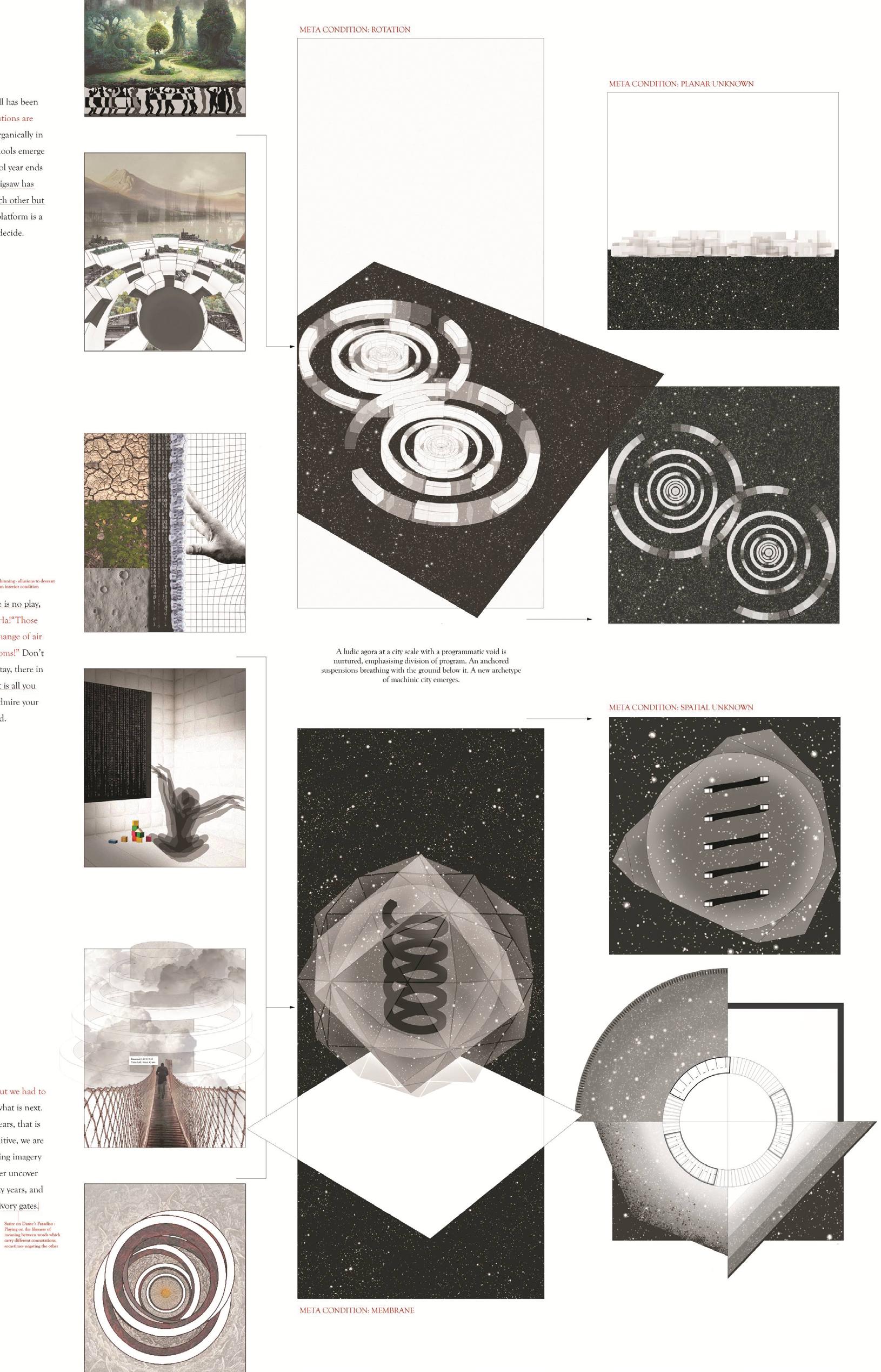
[Fig 4]
LOST IN TRANSPORTATION, SOMEWHERE
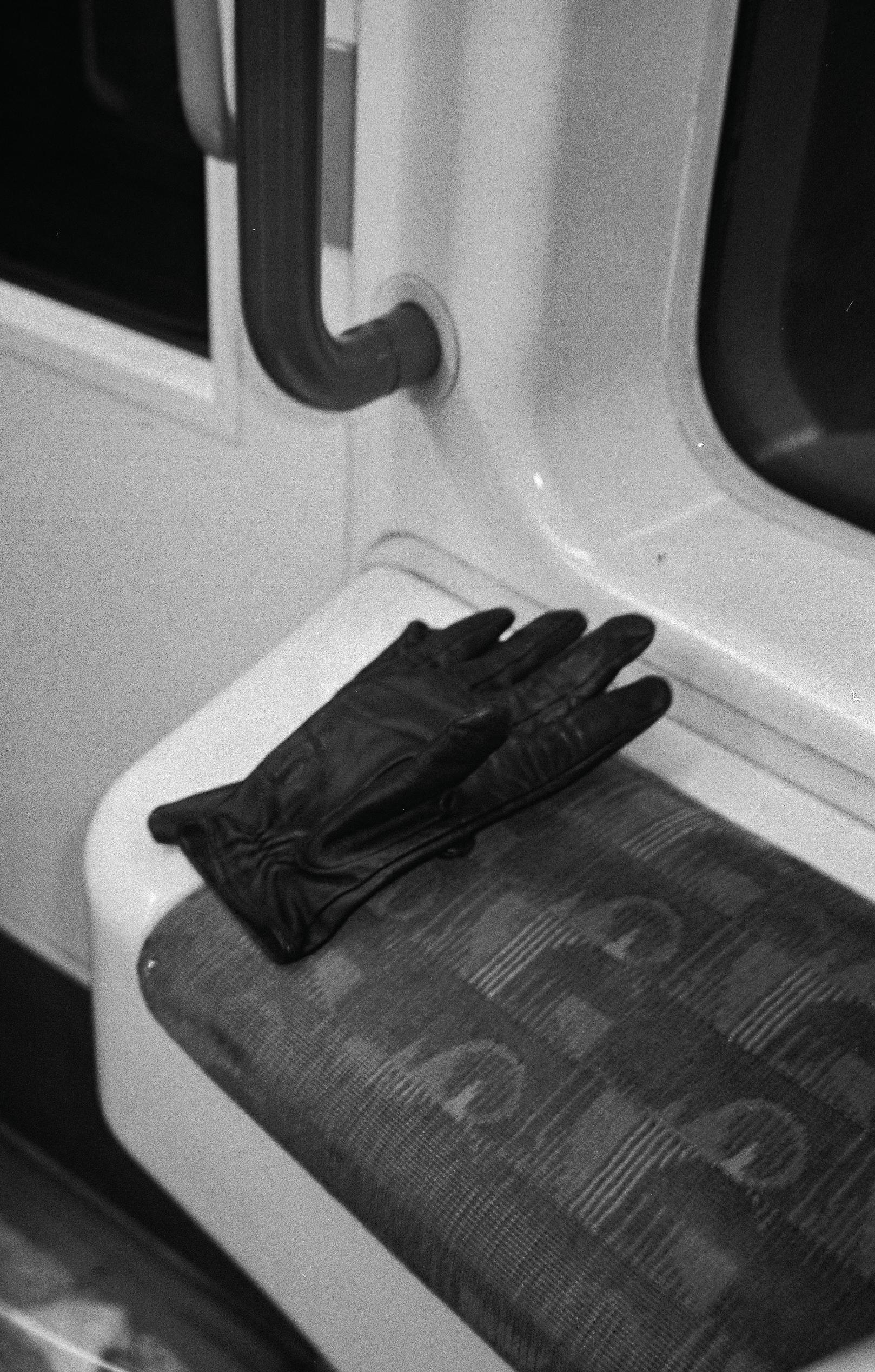
ZONE (1 TO 3) OFF-PEAK.
WELCOME BACK. TUBE IT. TRAIN IT. BUS IT.
ABYA-YALA: Retrotopia A M E R I C A Latinaa
A M E R I C A (N): the continent
This is a six-handed text. As Latinoamericanxs who inhabit the corridors and rooms of the AA, so are we: polyphonic, polycentric, polymorphic, polychromatic. These words constitute an act of resistance as much as praxis for discovery. They are an action, a report, a field diary and a call for critical reflection. We have attempted, through this piece, to gather multiple voices, using creative writing to debate the intricate regimes of language that have fractured the unity of the semantic space that we call A M E R I C A. For some time now, a portion of the A M E R I C A N territory has ceased to be part of the continental project, and has instead come to occupy a paradoxical place in which it has been stripped of any intellectual, political or cultural connection with its mass totality.
America (n): Single understanding of America as the United States
We inhabit A M E R I C A but we are not Americans. We inhabit the gap between the metaphor and the landmass. A single example may suffice – within the seminars, lectures and conversations that take place every day at the AA, an accumulation of cold references fill the discussions: American architects,Americancities,American schools,Americanmodernism,American researchers…historiography,vision,wayof life,photography,films,etc. There is no need for more complex analysis to infer that what is being made explicit is not the general set of practices that occur on the mainland, but rather those that develop within Anglo-Saxon northern boundaries. In other words, what appears to be a skilful and non-harmful use of language dismisses defacto a cumulus of values, cultural expressions, intellectual formations and saberes (knowledges) deployed in a geographical extension larger than the one it is intended to describe.
américa: The otherAmerica
Figuratively, America can be A M E R I C A without further clarification, but américa can only be an appendix of A M E R I C A if it is defined as Latin. The unity of the region, far from being desirable, is continuously discouraged. américa belongs elsewhere: tropical studies, architecture without architects, vernacular and indigenous construction, emerging spaces and marginal environments. What seems most worrying is that this practice continues to be reproduced amid a globalised academic context in which the specification of language, care for reference and critical thinking seem to be non-negotiable qualities.
america: The metaphor
In the interest of broadening this debate beyond lectures and informal conversations, we decided to model an exercise that would bring together the extended AA community of students, staff and alumni. Its rules were straightforward: in response to the question ‘What is America?’, participants had to record on a sheet of paper anything that came to their mind. Drawings, texts, words, references, quotes … anything could be included. The aim was to investigate possible interpretations, deviations, fugues and visions that collide around this diffuse mass. Participants in this activity came from India, Germany, Colombia, Russia, Ecuador, Turkey, Dominican Republic, Italy, Greece, Argentina, the United States, México, Nepal, China, France, Brazil, Japan. We are especially grateful to these 32 people for their contributions.
25
LATINAA
1This way of writing A M E R I C A makes reference to denominations on maps, which label and represent territories that themselves contain political divisions.
This is a design logic that must be critically confronted. It has resulted, among other issues, in the fractionation of the A m e r i c a s in lines that were drawn on maps – or images that are not the territory – from the Tordesillas Treaty to the division between Latinoamérica and Anglo–Saxon America, or the American countries’ political borders. If the past and contemporary fragmentation of the continent – with all the social and environmental issues that it implies – means the erasure
of multiplicities, then the challenges for contemporary society might be to care for these multiplicities: (re)finding them and, through them, (re)thinking A M E R I C A.

27 ABYA-YALA
Columbus’s arrival in the Bahamas in the 15th century marked the transformation of america into a historical fact. A M E R I C A, a landmass that emerged more than 1.5 million years ago from the junction of three tectonic plates, was then (re)named to be inserted in the European imaginary – to be discovered, explored and exploited. Despite its natural geographic unity and its own complex human and non–human dynamics, colonisation imposed a geopolitical dismemberment
upon the continent that led to the greatest massacre in human history, decimating millions of local peoples in less than a century and initiating significant deforestation processes. For colonisers, America might have come to mean a land of discoveries and opportunities; yet enslavement, territorial division and the constant exploitation of natural resources became embedded in the American society from the north to the south of the continent.

26 LATINAA
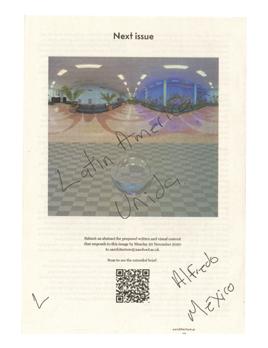



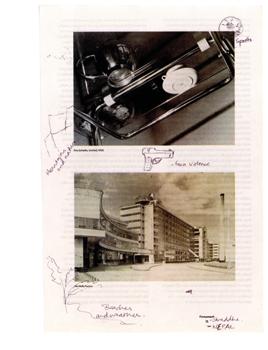

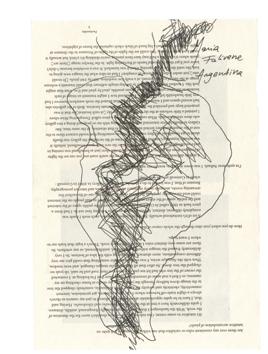



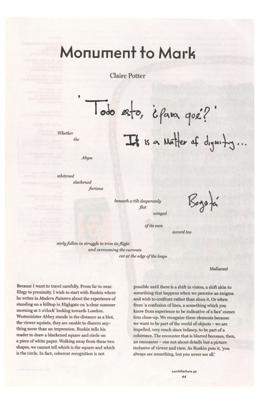











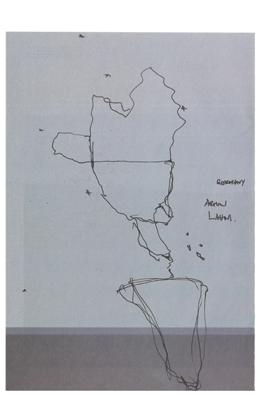


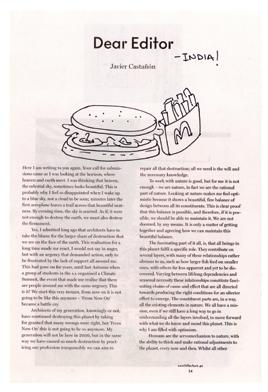
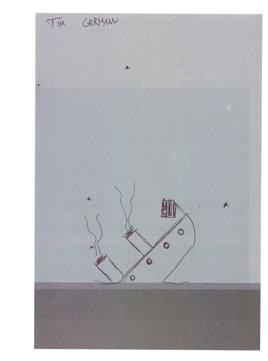



Through this exercise, we found a complex set of understandings of the term america. We found a word that is intricately placed within certain tensions and which carries diverse meanings, but which is also symptomatic of distant, neutral and resistant perceptions. We first found that to some – who may be distanced from a Latin American perspective – america is the denomination for the United States. This is closely associated with a capitalist lifestyle, problematic urban settlements, contradictions, segregation and, more prominently, relates to a culture filled with violence, fast cars and fast food. Secondly, we found that some described a more neutral comprehension of america as a place of nature; a continental mass of mountains, landscapes and bodies of water. A M E R I C A without curation, as a mystified and ancient horizon without lines, marks or other names given. A word that translates into an open scenery, maybe even a retrotopia that interweaves everything within the 24,000km path of the Pan-American Highway that virtually connects Deadhorse, Alaska with Ushuaia, Argentina. A third comprehension of the word denotes resistance: a recognition of the contradicting realities of the countries and cultures that compose américa latina
In this understanding of the word, america is a consequence of its colonial pasts and presents, its myths and the dignity of its peoples – those who existed well before ‘being discovered’ and who resist despite being the other
America is fundamentally incompatible with and exclusionary of the polyphony of meanings behind the metaphor of america. We would like to highlight that the use and abuse of the English-language disambiguation of America – which refers only to the United States – is an invisibilising and colonial practice. Moreover, the disregard for the other understandings of A M E R I C A generates a gap that excludes and distances members of our so-called global community. This happens within the bounds of the classrooms and studios we inhabit, and within the limits of the pages we read, write and draw, regardless of whether we have, or have not, been confronted by the ideas we are now putting forward.
Abya-Yala: retrotopia A M E R I C A
In pre-Columbian times, the native american Guna people who settled in the Isthmus of Panamá used the term Abya-Yala, meaning ‘land in its full maturity’ or ‘land of vital blood’, to designate the non-divisible expanse of terra they inhabited. It is not clear whether the concept encompasses the entire landmass, yet it can serve as a point of reference from which to trace a better understanding of america. A single body, a full totality, an enriched continent that fosters manifold situated knowledges. There is no term that bridges the gap between that Guna vision and the AA context. However, we do encourage the possibility of avoiding the use of America as a concept that excludes and divides. Conversely, if we use it, then it should be as a call for inclusion, an act of critical reclamation and a means of illuminating the historical tensions that exist within the Americas.
30
ABYA-YALA
TIME TRAVEL FROM £2.50 OFF-PEAK.
 WELCOME BACK. TUBE IT. TRAIN IT. BUS IT.
WELCOME BACK. TUBE IT. TRAIN IT. BUS IT.
FILL IN THE GAAP: SPACE

Record your journey in-between the AA’s campuses through sketching and writing.
Time of departure from: :
Time of arrival at: :
Purpose of visit:
30 FILL IN THE GAAP
Time of departure from: :
Time of arrival at: :
Purpose of visit:
31
SPACE
UN-define Space!
Mila Kostović
Enter. Turn. Climb up. Disappear. The new AA buildings on Montague Street contain many interlaced rooms and even more steep stairs. When students are constantly rushed into shared areas, there is no time left to stop, meet or converse. The absence of opportunities to spend time in the in-between – meaning the absence of horizontal surfaces not bound to consumerism1 – evokes discomfort among many students whose programmes are based at Montague Street.
To be explicit, there is a lack of undefined space within the buildings; there are few places to linger, pause and share. Space inside Montague Street is defined either as studio rooms, passageways, staircases or hallways. No horizontal surface is inviting enough to encourage us to stay in the in-between.2
A community is formed in the short moments caught in-between courses, by the faces we see and by the questions we ask.
In a building for students, the potential for informal encounters to take place is minimal. Door signs indicating the different programmes that inhabit the rooms of Montague Street do not name the individuals that represent these very programmes during the current academic year. The students’ estrangement equals the missing opportunities to form a community.
The buildings at Montague Street have been rented to expand the school and attract more students. But there is a difference between an agglomeration of future students and the sustenance of a future school community. Regarding the AA’s current agency, one aspect of the missing horizontal space appears even more pressing: there is no chance for people with physical disabilities to access these buildings. This fact excludes a group of potential students from the very start.
Why is there no money directed to equality in terms of the access and use of this space? How does space a priori define whether or not we are an inclusive community?
32 MILA KOSTOVIĆ, HISTORY AND CRITICAL THINKING 2022-23
1Coffee and knowledge. 2 Please, be aware of the privileged context we are in. A lot of houses have no roof.

In an attempt to explore the space in between the AA’s three sites, we – the editors of AArchitecture – set out to play a version of the game ‘exquisite corpse’. Rather than drawing or writing, we chose instead to use the game to create an object that could link Bedford Square, Montague Street and Hooke Park, and the communities that inhabit them. This exercise challenged us to complete two acts of translation: first, translating the needs of a community into a design brief, and second, to translate that brief into a built object.
We identified a need, wrote a brief and sent it to the Hooke Park community. They responded with a couple of proposals, and from these we set out to build the portAAble bar, designed by Yvonne Yifan Wang. This process was not exempt from the challenges intrinsic to any construction process, yet our troubles did not diminish the outcome. The exquisite corpse was successful, with the participation of all of our collaborators engraved into the result: three height-adjustable bar-chairs that also functioned as storage.
These chairs are an initial gesture that provides a meeting point and an excuse to extend the sense of community so characteristic of the AA Bar into the new Montague Street buildings. We extend the invitation to all readers to participate in the next stage of this game of exquisite corpse.
Special thanks to Yvonne for her collaboration, and to Ángel and the Digital Prototyping Lab team for their help.
34 EXQUISITE CORPSE

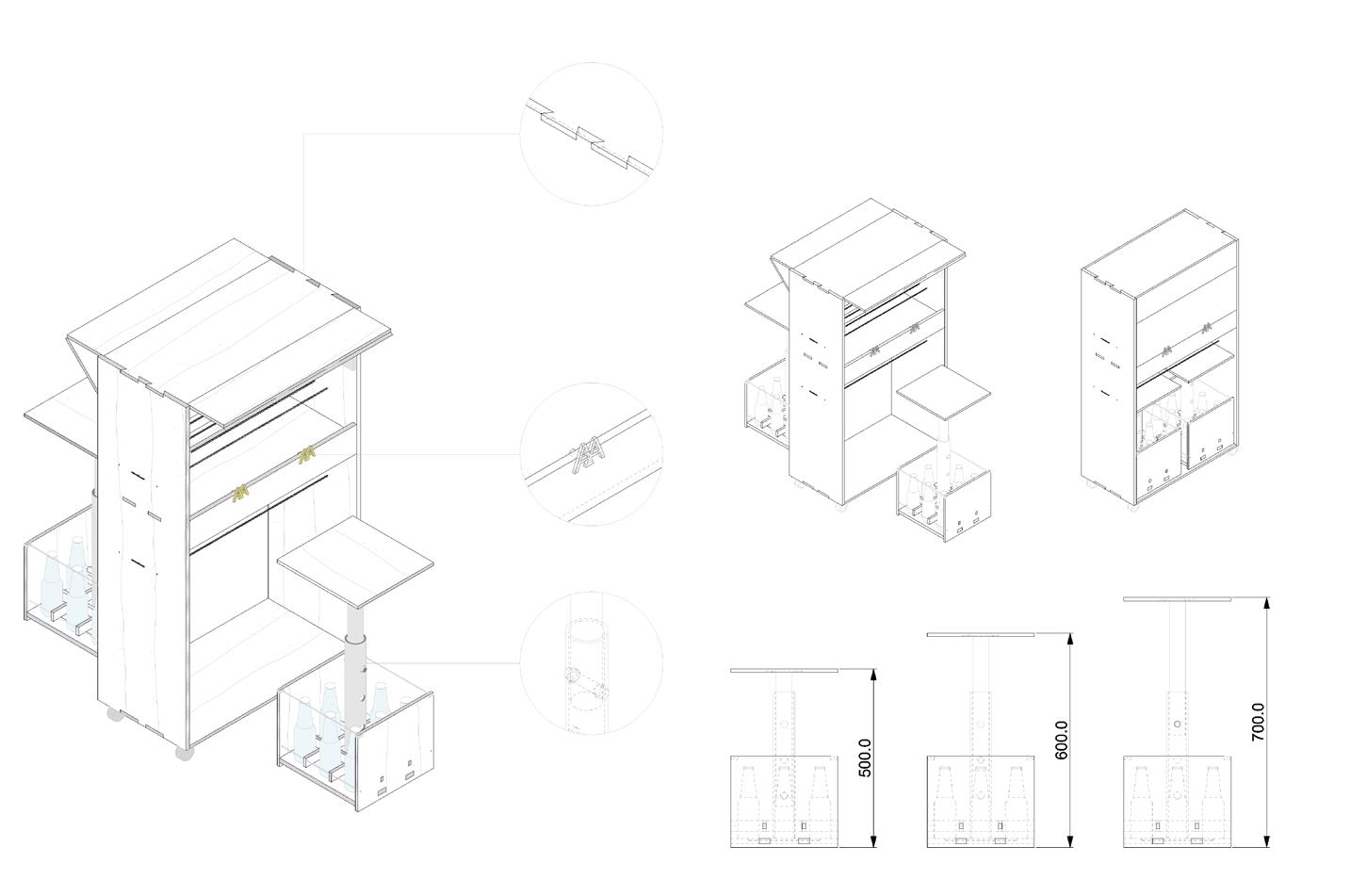



35 PORTABLE BAR
MAKING: THE (DIGITAL) CRAFT Juliet Haysom
‘Productive Drawing’ was a workshop-based Media Studies course delivered by Juliet Haysom in 2020–21, which aimed to facilitate physical acts of making at a time when students were unable to access workshops and architectural education was taking place entirely online. The course addressed the following question:
What kinds of instructions can a design drawing carry, what is omitted and what can be assumed?
Architects establish collaborations with fabricators and other construction industry specialists that are most often mediated through written and drawn instructions. The term media comes from the Latin medi, meaning middle.
The course took inspiration from the contrasting relationships that Donald Judd and Carlo Scarpa each had with the fabricators they worked with, and intended to offer an opportunity for students to take on the roles of both designer and maker to realise one another’s designs. In parallel with drawing, participants identified language that describes tools and their associated actions, to enable a dialogue with experts and use as the basis upon which to establish fruitful collaborations. Drawings and written instructions mediated the gap between designing and making.
36
ANECDOTE 1: YORK MINSTER
At York Minster, 1:1 scale template drawings were recently found etched into the medieval floor within the Lady Chapel which provided instructions for the construction of the stonework for the cathedral. At Knowle House in Kent, archaeologists have found traces of the architectural glass production process in the park adjacent to the house. In the medieval period, glass production required a large volume of timber to be burnt to generate sufficient heat; as both sand and wood were expensive to haul long distances, it made sense for the glass works to be built onsite, close to these resources and the house itself. Building materials at that time were very expensive and slow to move, but craftspeople were relatively mobile. The ‘building site’ was therefore the site of design and manufacturing as well as the site of construction.
These examples demonstrate the close physical proximity between designing, making and assembly that is often found in traditional construction, and highlight how this proximity contrasts with the working relationship between contemporary design, fabrication and construction, which are often separated by large distances. A building in the English countryside might be designed by an architect based in London; the windows used in its construction imported from a factory in Eastern Europe; and the stone used in its fabric quarried in China and cut in Italy. With increased specialisation and atomised production, the role that drawing plays as a tool for communication and instruction becomes central to design, fabrication and construction.
In digital modelling, the designer modifies mathematical surfaces that are infinitely thin. The model space is frictionless, weightless and without gravity, and so does not follow the same logic that physical materials or craft techniques require. One of the most common actions used in digital production is extrusion – a process that cannot be applied to most traditional construction materials. The relationship that a lot of students have with the digital construction of geometry means that analogue processes of making are difficult for them to grasp.
In physical acts of making, an action allows the maker to understand both volumetry and assembly. Through the mistranslation of traditional craft in the digital production of geometry, part of the architect’s design agency is accelerated, but part of it is also lost.
ANECDOTE 2: THE HIGHGATE CEMETERY RESTORATION
Highgate Cemetery Limited manages the day-to-day running of Highgate Cemetery, including liaison between grave owners and monumental masons when repairs are required. The Cemetery has longstanding working relationships with several monumental stonemasons. As many of their jobs involve remedial work on existing structures, drawings are not required; instructions are usually provided in the form of written descriptions with accompanying photographs. Drawings are more often employed within proposals for new monuments.
Within architectural instructions, it is difficult to communicate the ‘qualities’ a design requires because qualities themselves are among the hardest characteristics to define, specify and translate. Composition, geometry and specification standards are objectively measurable, and are therefore the primary kinds of information used to instruct the production of a building. These are also the basis for costing and contractual accountability. Orthogonal projections such as plans, sections and elevations are the generic mode through which buildings are represented. They are the main tool used to communicate with contractors and subcontractors, as they articulate the layout, structure and constituent parts of a building. The subjective qualities of a completed construction – its atmosphere, acoustics, material performance and luminance, for example – are arguably the most important in terms of how people experience and inhabit the building, but these qualities are the net result of quantitative instructions.
37
ANECDOTE 3: JAMES TURRELL
James Turrell is an American artist who works with light. He states: ‘My work has no object, no image and no focus. With no object, no image and no focus, what are you looking at? You are looking at you looking. What is important to me is to create an experience of wordless thought.’1 There is something of a paradox in his work, in that the luminous qualities that are the point and purpose of his installations are not in themselves represented by the construction drawings that his installations require. The qualities of light and place are inherited from previous experience and physical testing, and are guaranteed by specifying the exact materials – light fittings, plaster finishes and so on – that together produce his desired effects.
ANECDOTE 4: ZOOM STONE FABRICATION
Zoom fabrication of one of the stone pieces designed by the students:
Number of digital actions: 13
Number of physical fabrication steps: 11
Weight of digital model: 62.3KB
Weight of physical object: 2.12kg
Duration of digital fabrication: 22min
Duration of physical fabrication: 4.5h
As they are subjective and unpredictable, ‘qualities’ can be hard to communicate or quantify. This lack of an objective method of quantification means that quality might get diminished in communication. The requirement for fabricators to make something ‘to the highest standard’ is subject to interpretation; requiring something to be made of a specific material to a specific size and finish is not. Subjectivity then plays an important part in what is included and what is left out of the design drawing. Communication most often focuses on the materials, components and geometrical layout of the design.
Quality becomes easier to communicate when the visual articulation of a project is supported by a good working relationship with the fabricator, which in turn facilitates a better understanding of specific materials and their associated craft processes. A good assessment of the amount of time and degree of dexterity required are equally crucial in ensuring a good quality of design.
38
1James Turrell, Introduction, https://jamesturrell.com/about/introduction/ (accessed 13 March 2023).
Saw, cutter, angle grinder, axe, bill hook, chisel, CNC, file, rasp, plane, guillotine, hacksaw, hydraulic crimp, jigsaw, knife, milling machine, morticer, router, sander, stone carving set
Air blower, Hydraulic pull-ram, compressor, crow bar
Anvil, Work Bench
Welder, Laminator, Hot Gun, Biscuit Jointer, Nail Gun, Rivet Gun, Sewing Machine, Stapler
Hammer, Press, Hydraulic Press, Mallet
Lathe
None?
Screwdriver, Spanner, Alan Key, Socket Set, Wrench, Ratchet
Drill, Punch, Borer
None?
Clamp, Vice, Brace, Pliers
Tape Measure, Weighing Scales, Measuring Jug, Ruler, Laser Measure, Calliper, Compass, Spirit Level, Cross-Line Level, Plumb Line, Micrometer, Pocket Balance, Profile Gauge, Set Square
Pipe Bender, Metal Roller, Blacksmithing and Forging Equipment, Vacuum Former, Hotplate
To cut, to remove
Cut, BooleanSplit, Chamfer, Mitre, Connect, Fillet, Remove, Split, SubCrv, Taper, Trim, Wirecut
ClippingPlane, Contour, Convert, CreateSolid, CSec, CutPlane, Divide, Explode, Extract, Purge, ReduceMesh, Section
To thrust Extrude, Heightfield, Loft, Offset, Pipe, Revolve, Ribbon, Scale, Slab, Sweep
To resist Lock, Ortho
To join Join, BooleanUnion, Merge, Loft, NetworkSrf, Weld
To flatten Make2D, FlattenSrf, Smash, UnrollSrf
CurveThroughPolyline, CurveThroughPt, EdgeSrf, Extend, PlanarSrf, Plane, Pull, Shell, SrfPt, Untrim
Project, FixedLengthCrvEdit, Splop
Block, Boss, Cap, CloseCrv, Connect, CreateSolid, FillHole, Group, Patch
Collapse, InsertLineIntoCrv, LineThroughPoint, Smooth
To rotate Orient, Rotate Maelstrom
To multiply Array, Copy and Paste, DupBorder, DupEdge
To tighten, to loosen
None?
To pierce MakeHole, PlaceHole, RoundHole
To reflect Mirror, Symmetry
To grip
To measure
DupMeshHoleBoundary
Lock, Weight Gumball
Angle, Area, CurveDeviation, Curvature, Diameter, Dim, Distance, Length, Radius
CrvEnd, CrvStart, Divide, Fair, Fit, GCon, ShortPath, Zebra
Chain Block, Crane, Pallet Truck, Telehandler, Tweezer, Hydraulic Lifting Table
Cylinder Cage, Gloves, Goggles, Dust Mask, Air Bench, Extractor Hood, Visor, Headshield, Welding Mask, Welding Curtain, Vacuum, Ear Defenders
To distort
Bend, FoldFace, Maelstrom, Shear, Stretch, Transform, Twist
Blend, BoxEdit, Cage, Cage Edit, MakeUniform
To lift Move Match
To protect Isolate, Lock Disable, Hide
39
VERB
CLOSE EQUIVALENT SLIGHTLY EQUIVALENT
WORKSHOP TOOLS
LIST RHINO COMMANDS
LOST IN TRANSLATION
Yoyo Chen
Inspired by the ‘mistranslation’ of the traditional Chinese pagoda typology within the Great Pagoda at Kew Gardens...
...this project is a work-in-progress that explores how the construction of traditional joints can be intentionally misunderstood to develop a new structural language. Working specifically with wood and mild steel, this technical exploration translates joint systems and their aesthetics to create a new connective language in which steel elements are standardised but wood elements remain untreated.
The aim is to develop a logic for the form of craft-based joint translation. By considering the skin of the materials and the gaps within them, as well as their behaviour, a series of models emerge through the process of translation between wood and steel, leading to further transformation.
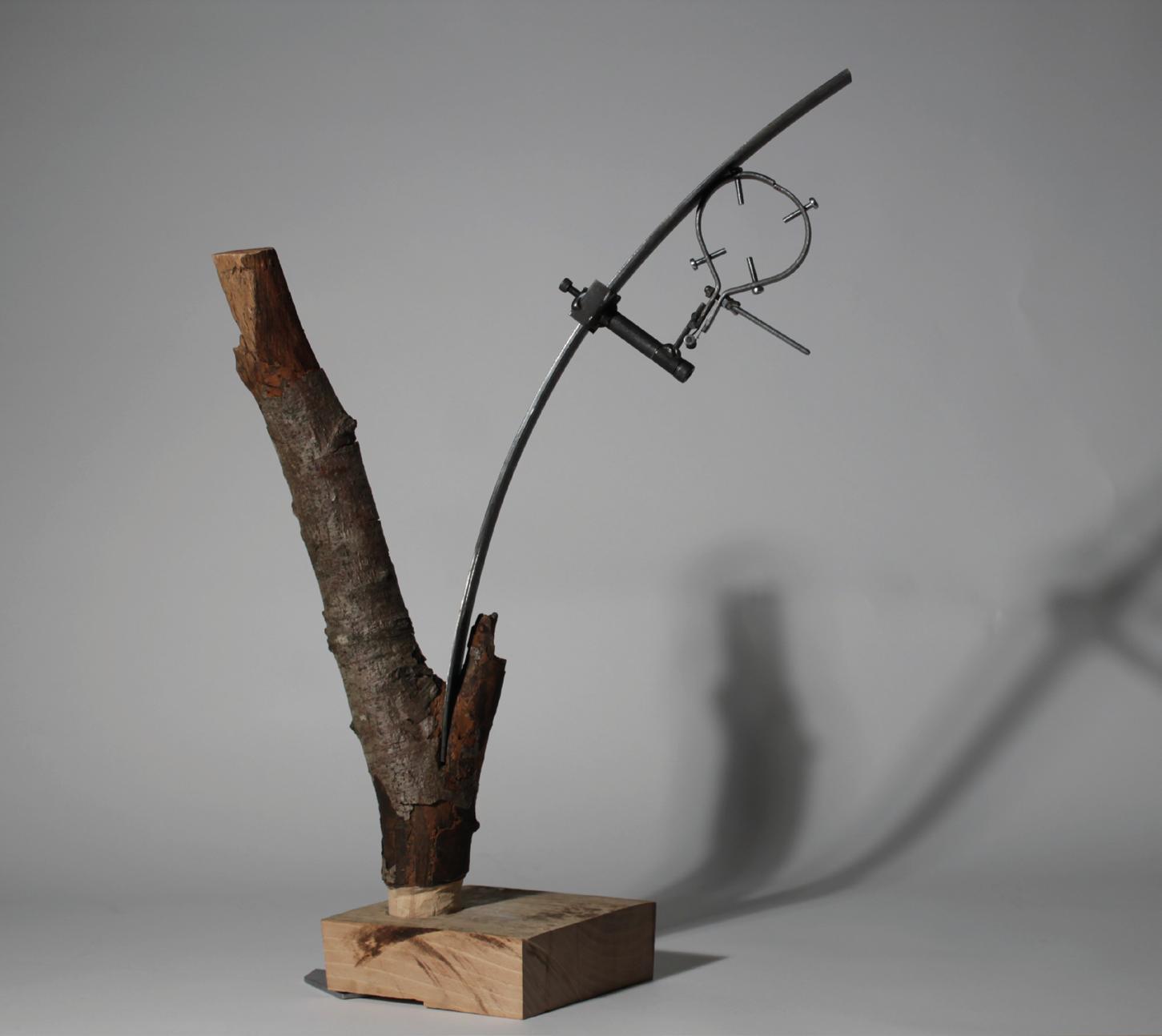
40 YOYO CHEN
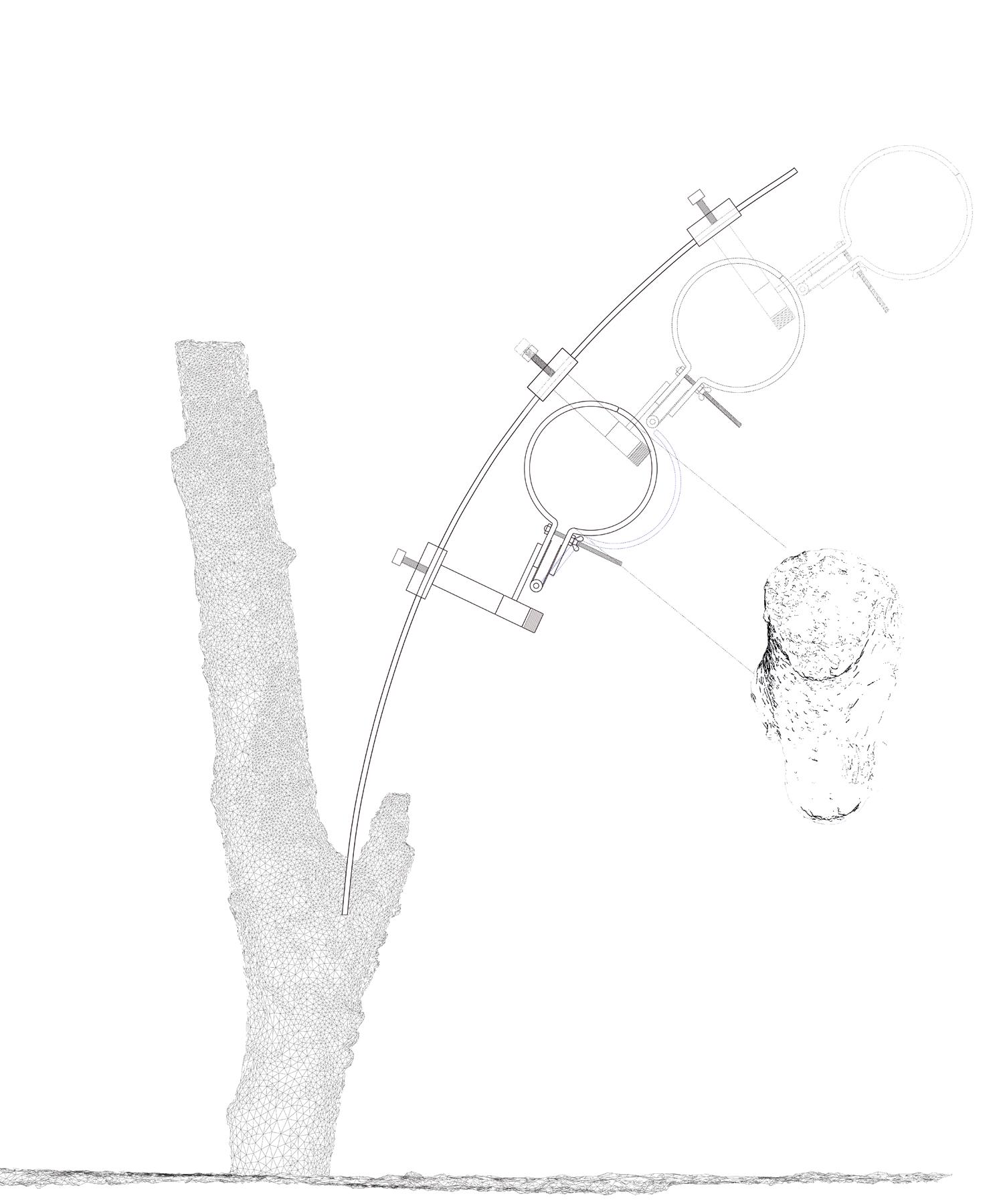


41 INTER 8, 2023
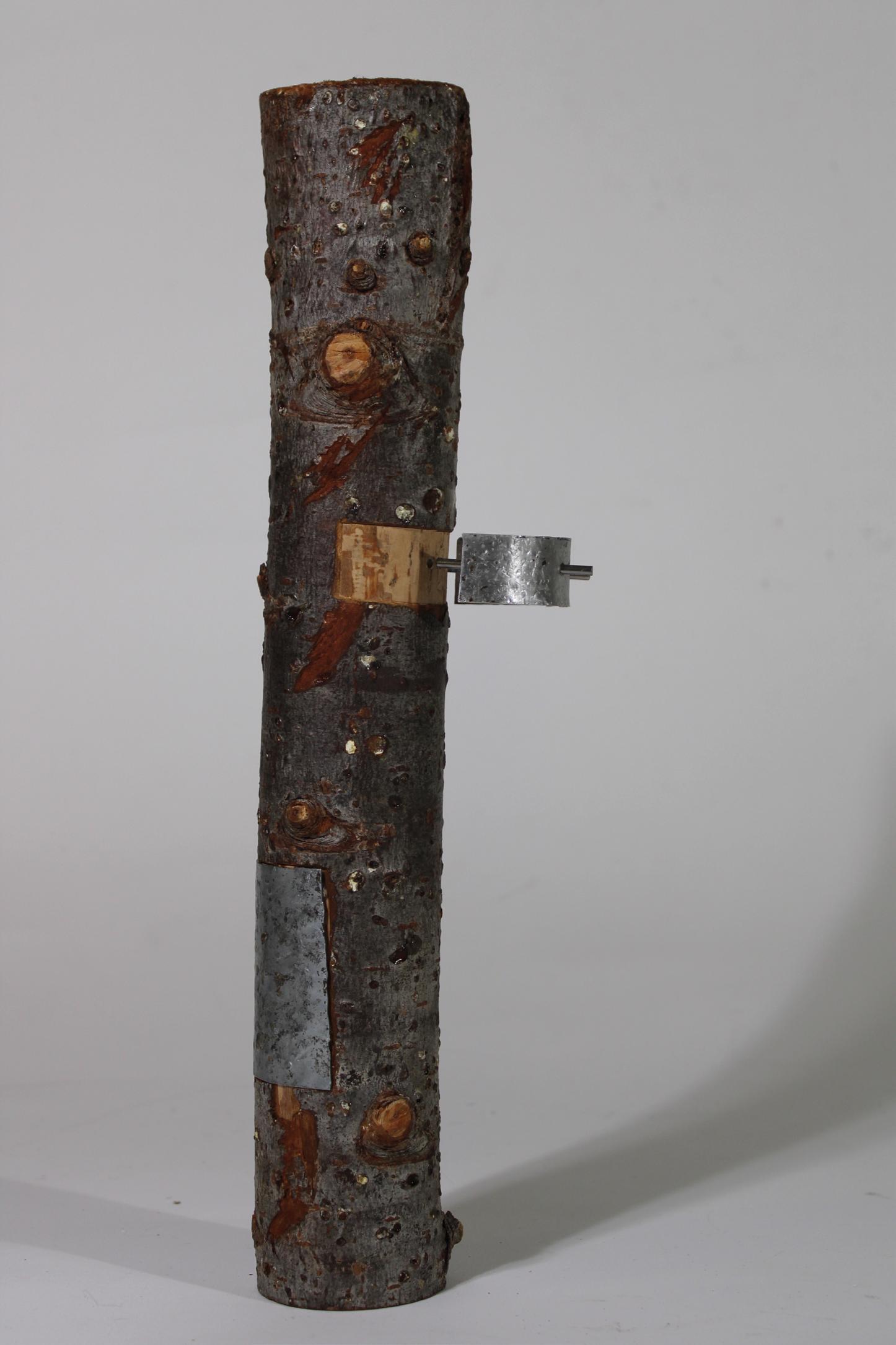
42 YOYO CHEN

43 INTER 8, 2023
VOID ECHOES Selin Öktem

Void Echoes reconfigures the idea of the urban void by deconstructing the institution of vision.
Reflections redefine and redirect vision by opening new pathways through which one can find gateways to events that were previously invisible. This project is a journey that descends into reflections, placing emphasis on the undermined opportunities that vision offers to both create and destroy meaning. The walkthrough has a site-specific narrative, in which an intervention imposes the duality of visual stimulation; at its peak, this stimuli is not tangible.
44
SELIN ÖKTEM


45 INTER 4, 2022

SELIN ÖKTEM 46

INTER 4, 2022 47
This morning I had before to the AA. I got there at , just in time for . I ran into my friend from . We talked about .
It’s funny, the first thing I remember about my friend is .
For lunch, I . I spent the afternoon
. Should I ?
I remember the time we had to for . Such an AA thing to do. Especially .
It looked a little bit like this:
Overall, the evening was . What can I say, just another at the AA.
(DATE/TIME/PLACE/INTERESTING OBJECT IN PROXIMITY)
Fill in the gAAp: Time
Dear future ,
I hope that in years from now, you have fulfilled your dream of . Do you still believe architecture can ? (Because it can!)
After the time you spent at the AA, hope you’re still in contact with ; if not, maybe give them a call now. Last time you were at the AA, we had this big issue with . How did that turn out?
How often do you visit the AA nowdays?
Is London underwater?
YES/NO/WELL...
In 2023, everyone says it will be.
What’s the most exciting thing we’ve done after the AA?
(INSERT PHOTO BELOW)
Fill in the gAAp: Time
Theresa and Romain started a series of events at Hooke Park called ‘Off Grid’, in which students from Bedford Square joined those from Design and Make to enjoy drinks and good music around the fire in the new Field Station pavilion.
Ben inflated a bubble in the Lecture Hall and students meditated inside to the ambient music he played. Jan, Jay, Mina and Artemis read some poetry.
A catastrophic earthquake struck Turkey and Syria in February. Led by Turkish students, the AA community gathered to donate supplies and participate in a fundraising bake sale; Lea brought some ‘sus’-looking cookies, and Anastasia’s lemon poppy seed cakes and Jay’s banana bread were bestsellers.
Gayatri was elected to stand as the Student Member of Council.
Jay started a cycling club.
Julian and Armin resurrected a previous AA tradition by restarting screenings in the Archives Cinema Room with ‘Architekturfilmnacht’.
LAWuN began to put framed photographs on mantelpieces at the AA, to create a family album and to archive happenings within and beyond the school.
Paola went around the school on St Valentine’s Day, giving roses to her friends.
Intermediate 10 held a 12-hour-long jury.
Richard and Magdalena started Latinaa; together with Ana, Natalia, Lola and Antonio, they’ve had chats, meetings and film screenings.
Arielle started the AA Knitting Club to empower makers who engage in the fibre arts. Among the club’s regulars, who meet on Wednesday lunchtimes, are Luisa, Xiaochi, Abhi, Tsolomon, Bryan, Michal, Uma, Amy, Dasha, Sara, Christos and Luis.
On 14 March, posters were anonymously put up on the landing of the main staircase at 36 Bedford Square in protest against the recent removal of students’ posters from the walls inside the school. On 16 March a magnetic display board was installed.
One lunchtime, the AA Catering team offered the ‘The shepherd is back in the cottage pie’ on its menu. Due to the ambiguity of this name, they added quotation marks on the menu by hand to indicate the correct reading: ‘”The shepherd is back in the cottage” pie’.
AA NEWS 50
There is an implicit idea of space in the concept of a rumour.

Send visual and written submissions to aarchitecture@aaschool.ac.uk AARCH 45
Aye Aye Tha Esther Qing Zhu, A club for the human, a club for letting go, a club for crying, 2023.
Open Call: AArchitecture 45
51
ACCELERATE
Accelerate is a Londonbased design education and mentoring programme organised by Open City, which supports young people from under-represented communities as they pursue careers in the built environment industries including architecture, engineering, landscape and planning.
ERLEND CHRISTOPHER LARSEN BIRKELAND
Erlend Christopher Larsen Birkeland is currently a Fifth Year student at the AA and is in Diploma 5. He obtained his undergraduate diploma at the University of Kent.
EDWARD BOTTOMS
Edward Bottoms is the Head of Archives at the Architectural Association.
ALBERT BRENCHAT-AGUILAR
Albert Brenchat-Aguilar is a lecturer at the Bartlett School of Architecture, UCL and a CHASE-funded PhD student at Birkbeck and the AA. His project As Hardly Found in the Art of Tropical Architecture comprises an exhibition (2023) and a forthcoming book.
TOM CHAN
Tom Chan is a Fifth Year student who is interested in curation and image-making, through the lenses of artificial intelligence and immersive environment.
YOYO CHEN
Yoyo Chen is a Third Year student at the AA.
MIRUNA DUNU
Miruna Dunu is Visual Communications Designer at MVRDV. With a background in architecture and information design, she works to translate complex architectural narratives into comprehensible formats such as exhibitions, product design, graphics and moving image.
MARIA FEDORCHENKO
Maria Fedorchenko is Diploma 6 Unit Master at the AA. Her research focuses on experimental design methods and tools, new approaches to urban analysis and diagnostics, and speculative design practices.
JULIET HAYSOM
Juliet Haysom is an artist who is interested in architecture and makes work that has a specific relationship with place. She is a Media Studies and Diploma Electives Tutor at the AA.
ATO JACKSON
Ato Jackson is a Ghanaian artist who lives and works in KumasiGhana. Jackson’s practice as an artist began with his interest in image-making as a medium through which to connect to his community and the world at large.
HARRIET JENNINGS
Harriet Jennings is a curator and cultural producer. She currently works on the public programme of events and exhibitions at the AA. Harriet is part of EYESORE – a group that documents and communicates experiences of the built environment – and is an Architecture Foundation Young Trustee.
MILA KOSTOVIĆ
Mila Kostović studied Architecture and Urban Planning at the University of Stuttgart, Germany and is currently a student of the History and Critical Thinking programme (HCT) at the AA. Her research interests include finding fugues between ideologies and architectural spaces with reinterpreted methodologies. In London she discovered a passion for chocolate-covered oranges.
LATINAA
Latinaa is a platform for actions, conversations and debates about and around Latin America. It is an initiative of Latin-American students at the AA. (@joinlatinaa)
DEBBIE MENIRU
Debbie Meniru is a Londonbased writer and curator. She is currently Curatorial Assistant at the Hayward Gallery. Previously, she has worked on exhibitions at organisations including Tate Modern, the Migration Museum and Somerset House. As a writer, she explores art and museums through a personal lens.
ÁNGEL LARA MOREIRA
Ángel Lara Moreira is Head of the Digital Prototyping Lab (DPL), a model-making facility, manufacturing laboratory and fabrication hub at the AA.
SELIN ÖKTEM
Selin Öktem completed her undergraduate degree at the AA, studying the translation and interpretation of immaterial patterns within the public realm through audiovisual media. She is a filmmaker and currently works with Fletcher Priest Architects.
CHRISTIAN PARREÑO
Christian Parreño is an Assistant Professor of History and Theory of Architecture at Universidad San Francisco de Quito, Ecuador. He is the author of Boredom, Architecture, and Spatial Experience (Bloomsbury, 2021) and many articles on conditions of sameness and exhaustion in the built environment.
MAGDALENA PICAZZO SÁNCHEZ
Magdalena Picazzo Sánchez studied architecture in Universidad Autónoma de San Luis Potosí and is enrolled in the HCT programme at the AA. She is currently an editor of AArchitecture.
RALUCA SCHEUŞAN
Raluca Scheuşan is in her Fourth Year at the AA. She has a passion for languages and acts of translation, has experience working in exhibition design, and enjoys directing plays. She is currently an editor of AArchitecture.
JACK SELF
Jack Self is Editor-in-Chief of Real Review. He was a Diploma 6 Unit Master from 2018–22.
MINA GÜRSEL TABANLIOĞLU
Mina Gürsel Tabanlıoğlu studies at the AA and cofounded the art initiative I ME CE. She is currently an editor of AArchitecture.
YIFAN WANG
Yifan Wang is an MSc student on the AA’s Design and Make programme. She enjoys the tranquil surroundings of Hooke Park.
AYE AYE THA ESTHER SU QINZ ZHU
Aye Aye Tha Esther Su Qinz Zhu is Burmese-Chinese and grew up in Singapore. She enjoys addressing notions of comfort in her projects, and explores different mediums and ideas in her work.
52 BIOGRAPHIES





















































 WELCOME BACK. TUBE IT. TRAIN IT. BUS IT.
WELCOME BACK. TUBE IT. TRAIN IT. BUS IT.


















